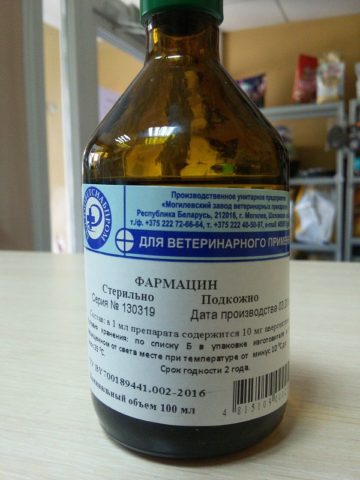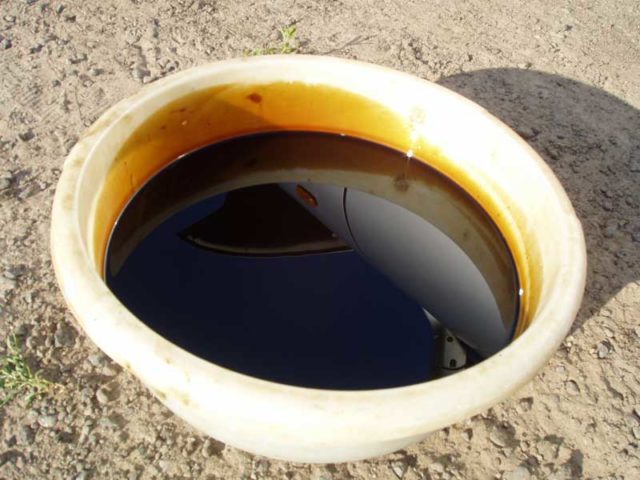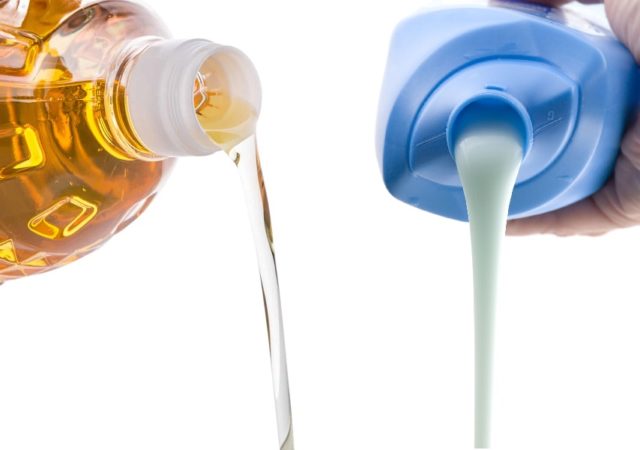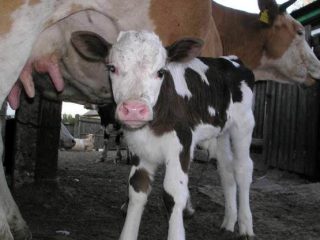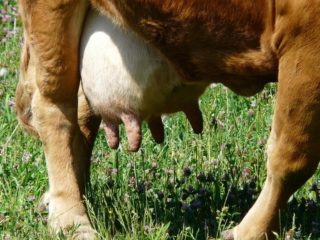Content
Many farm animals suffer from insect attacks. And cows are precisely those that are susceptible to the bites of a whole swarm of pests. They attract flies, horseflies, horseflies and ticks. And among all of these, it is ticks that pose a particular danger to cattle. Therefore, a responsible owner must take measures to protect animals from this parasite and, if possible, use a specialized anti-tick medicine for cows.
Why are ticks dangerous for cattle?
Ticks belong to a number of blood-sucking insects, which can also be carriers of a large number of dangerous diseases. The list of diseases carried by these parasites includes:
- foot and mouth disease;
- brucellosis;
- encephalitis;
- psoroptosis;
- piroplasmosis.
Infection occurs as a result of a bite. If not detected in a timely manner, this can be dangerous both for the cow itself and for the person consuming the milk.
There are about 55 thousand species of ticks in nature, the size of which varies from 0.2 to 5 mm. They are most active in late spring and early autumn.
Most often, cattle are attacked by “pasture” ticks. They can be found in the groin area, under the neck and on the neck. They are carriers of the pathogens piroplasmosis, anaplasmosis and babesiosis.

Ticks are very dangerous parasites that can cause various diseases in cows.
Sometimes you can observe cows being affected by Chorioptes mites, which often settle on the mammary gland (udder), as well as on the hind legs and tail area. They are representatives of the skin beetle genus, which provokes the appearance of scabies in cows. Also, damage to these mites is called Chorioptosis.
Another representative of this parasite, which causes demodicosis disease in cattle, is the demodectic mite. It develops and forms colonies in hair follicles and sebaceous glands.
A tick can live without food for more than 1 year. Therefore, as a preventative measure, the premises where cattle are kept should also be treated.
Anti-tick medications for cattle
Today there are a considerable number of drugs against parasitic insects for cattle. But, as a rule, those products that work well against flies and mosquitoes are practically unsuitable for protecting against ticks. Therefore, below we will present a number of effective drugs suitable for combating ticks and for preventive measures.
Products used against ticks in cows are divided into 2 categories:
- repellents (preventive deterrents);
- insecticides (killing).
Among the drugs used, the following should be highlighted:
- Bayofly Pour-on (BioFly Pur-on) - the drug is produced in the form of a solution for external use, which is an oily, transparent yellow-brown liquid, intended for treating cattle during the grazing period to protect against blood-sucking insects, not recommended for cows weighing less than 300 kg (protective period 28 days) .
- Entomozan-S – an insecticidal acaricidal agent of contact action, intended for the destruction of ticks, it is used in the form of an emulsion by spraying or washing throughout the grazing season, it is considered moderately toxic, which in the recommended concentration does not have a local irritating effect on the animal.
- Oksarep - an aerosol repellent intended for daily spraying of all parts of the body (especially the neck, head, back and limbs), dairy cows are treated after receiving milk, thoroughly washing the udder, the drug belongs to the budget category.
- Acaromectin – an aerosol product to combat demodicosis in cows, it is used 4 times during the treatment period with an interval of 5-7 days. This drug is a destructive composition that effectively fights demodectic mites.
- Butox – a product that is used for external treatment of the cow’s body by spraying with an aqueous emulsion at a concentration of 0.005% twice with an interval of 7-10 days, is effective in the treatment of psoroptosis, the drug is also used for preventive purposes, but spraying is carried out once during the summer season.
- Sebacil – a means for destroying scabies mites, used by the washing method for individual treatment of cows; for group treatment, the spraying method should be used; this product is not intended for dairy cows.
- Sanofit – a preparation in the form of an ointment used to treat the mammary gland of a cow, intended to repel various insects, including ticks, and is also an anti-inflammatory agent. This ointment contains essential oils, the smell of which repels insects.
- Ivomek – this is a ready-made sterile solution intended for administration as a subcutaneous injection, it is a destructive drug that begins to act 1 hour after administration, kills scabies mites (this drug has unique therapeutic effects and has no analogues among other antiparasitic drugs).
- Pharmacin – antiparasitic sterile solution for subcutaneous injection into the back third of the neck or into the forearm area. During treatment, cows are administered it once or twice, depending on medical indications.
- Cydectin – injection solution for subcutaneous administration, intended for the treatment and prevention of both scabies and pasture mites, it is absolutely harmless when used in the indicated dosage.
Rules for using anti-tick medications
Preventive measures to protect cows from ticks must be carried out immediately with the onset of warm weather. For these purposes, preparations with a repellent effect are usually used, which are designed to repel parasitic insects.
Depending on the drug used, the method of use differs significantly. For example, Biofly pur-on is used dropwise from the withers to the tail. Next, the drug is released onto the skin through the glands within 12 hours, distributed over the entire surface of the cow’s body.The protective properties last up to 3-4 weeks, after which re-treatment is required.
In the case of water-soluble drugs such as Butox, Entomozan-S or Sebacil, the protective effect lasts no more than 10 days. Then the spraying or washing procedure is repeated as necessary. But it is worth noting that in most cases these medications are contact insecticides.
Aerosol sprays, such as Oxarep or similar, require daily use.
Ointments to protect the cow's mammary glands are used after each milk delivery.
It is also worth understanding that any medicinal chemical penetrates into the cow’s body. Therefore, after processing the animal, you should not consume milk; it is advisable to postpone the slaughter of livestock.
Traditional methods of protecting cattle from ticks
Many livestock farmers often use folk remedies that are safer for cows instead of chemicals. These methods of protecting cattle from ticks are more preventive, but they cannot be called ineffective.
Among the proven means, the following should be highlighted:
- vegetable oil – lubricating the groin area, ears and udder of a cow allows you to protect the places most vulnerable to ticks at home; this method is the simplest way to protect against ticks, but is more suitable for a small farm (with two or one cow);
- tar solution with vegetable oil at the rate of 1 to 10 - applied by coating, the solution after treatment retains its effects for 3-4 hours;
- used machine oil – it is applied in the form of strips on the animal’s body over the entire surface and in the groin area, the treatment is carried out at the beginning of the grazing period, many livestock breeders claim that the use of used machine oil against parasites does not affect the taste of milk;
- a mixture of vegetable oil and shampoo – the product is diluted in a ratio of 2 to 1, applied by smearing it over the entire body of the animal, more generously lubricating the area of the head, neck, legs, and groin;
- smearing with wormwood, mint, lavender or geranium – this method allows you to protect the animal from the attacks of blood-sucking insects by scaring them away, but it is ineffective against ticks, so it is more suitable for calves that have not yet been driven out to pasture with the herd.
Treatment with folk remedies allows you to moderately protect the animal from the scourge of parasitic insects. In this case, preventive procedures should be carried out daily, since the protective effects of home remedies are short-term.
Conclusion
Anti-tick medicine for cows is a means of protecting the animal from various diseases that can be transmitted by these parasites. By providing timely preventive measures using folk remedies to protect cows, serious consequences that require the intervention of more effective chemicals can be avoided.








